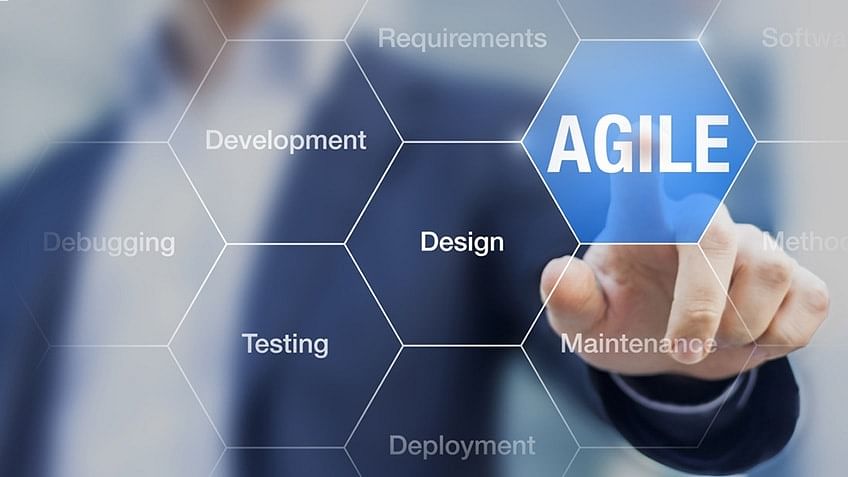According to the Project Management Institute, using lean agile principles can help businesses define their ROI. How often has someone offered that kind of clarity for your efforts?
Lean-agile and scrum project management can also improve your processes, create structure, and encourage leadership.
You may have heard of evidence like this in the past, but can the value it provides heal the pain of the upfront costs? Discover the answer to that question and much more about the Safe principles below!

Contents
Economic Views
The Scaled Agile Framework starts with putting each decision into an economic context. Whether you’re thinking on a macro or micro scale, this project management style always keeps the budget and KPIs at the heart of your efforts.
Part of this effort involves managing factors like the following:
- Risk
- Development costs
- Operational framework
- Cost of Delay (CoD)
- Manufacturing processes
Everyone has the goal of creating a product that adds value with the least amount of lead time. Without having these tools in place, that can prove to be a challenge.

Applying Systems-Based Thinking
Putting systems thinking into use allows your team to take a look at how the parts interact. In other words, you won’t find yourself wondering how the big picture will come together.
No matter the scale of your effort, the complexities at hand often require intense coordination. Using a scaled agile framework allows this to happen with fewer hiccups along the way. After all, creating a new optimization for one part does not improve the entire product.
Assume Variability
The process of designing solutions in previous methodologies usually creates a single set of criteria. The problem is that this narrow approach makes realizing you made the wrong choice an even more significant obstacle.
While using lean-agile principles, your business has the flexibility to create solutions along the way. These decisions do not come from a metaphorical (or literal) crystal ball. Hard and empirical data drives decisions around the design and its desired outcome.
Develop in Increments
Do you know how someone eats an elephant? The answer is always one bite at a time!
Creating new systems and processes is stressful enough without biting off more than you can chew. The lean-agile method allows users to test in much more manageable chunks. Additionally, juggling requirements doesn’t feel so overwhelming while using this model.
Base Milestones on Objective Evaluations
Having the flexibility to be honest about what’s working and what needs to change has significant power. Using the phase-gate model creates milestone moments that allow this process to take effect on the final product.

Creating milestones is not unique to this type of project management. You’ve likely heard this buzzword thrown around in the past. But what you haven’t experienced is how integrating them into testing can improve your ultimate return on investment.
Limit WIP, Reduce Batch Sizes, and Manage Queues
As your work in progress (WIP) limits increase, you may find yourself stressing about maxing out your workflow.
Lean-agile project management visualizes the amount of work, reduces batch sizes, and manages queues to cut down wait times. The intended effect is to create a constant flow that supports your efforts to create a lean company. Your new system will have the opportunity to move swiftly from concept to realizing improved profits.
Synchronize With Cross-Domain Planning
Finding the right rhythm for development is essential to feeling like the project is in synch. When this happens in conjunction with cross-domain planning, every aspect can integrate.
In many cases, these efforts also occur with cross-domain planning to better address uncertainly. When your team builds out new software with this type of confidence, customers will notice one way or the other.
Unlock the Motivation and Knowledge of Your Workers
System-wide changes can create destructive competition and ruin cooperation among team members.
Instead of this kind of disaster, a SAFe approach gives everyone a sense of ownership and influence. An environment that removes limits and encourages this behavior creates a better experience for customers and your enterprise. Instead of allowing people to sweat the endgame, they now have a level of engagement that can build a sense of pride.
Decentralize the Decision-Making Process
It’s easy to wonder how decentralizing decision-making doesn’t lead to chaos, but that’s not the whole story. Branching out ownership over a new product promotes a sense of pride and a clear understanding of purpose.

Significant, global, and strategic decisions can still get made using a central process create with the help of professionals from agile-center.com. But when you allow those with the most knowledge to innovate, development and feedback improve. Lean-agile principles allow for your organization to find the right balance for your project on your own terms!
Organize Yourself Around Value
Value in a new system or business process relies on creating innovative solutions that allow for flexibility. As your customer needs or tastes change, you don’t want to feel stuck with a pricey system that no longer feels relevant.
In our fast-moving digital times, responding to changes in the market can make or break any enterprise. Building a product that accepts this reality can reduce reliance on “institutional memory,” make handoffs easier, and cut down on delays.
Want to Learn More About Lean Agile Principles?
Now that you understand Lean Agile principles and what the process has to offer, what comes next? Independent consultants and other firms make their living from helping leaders like yourself. Start gathering quotes for your project, and the team that fits best within your company culture will emerge.
Do you want to look into more project management or business growth topics? Discover more articles like this one by exploring more of our blog today!

